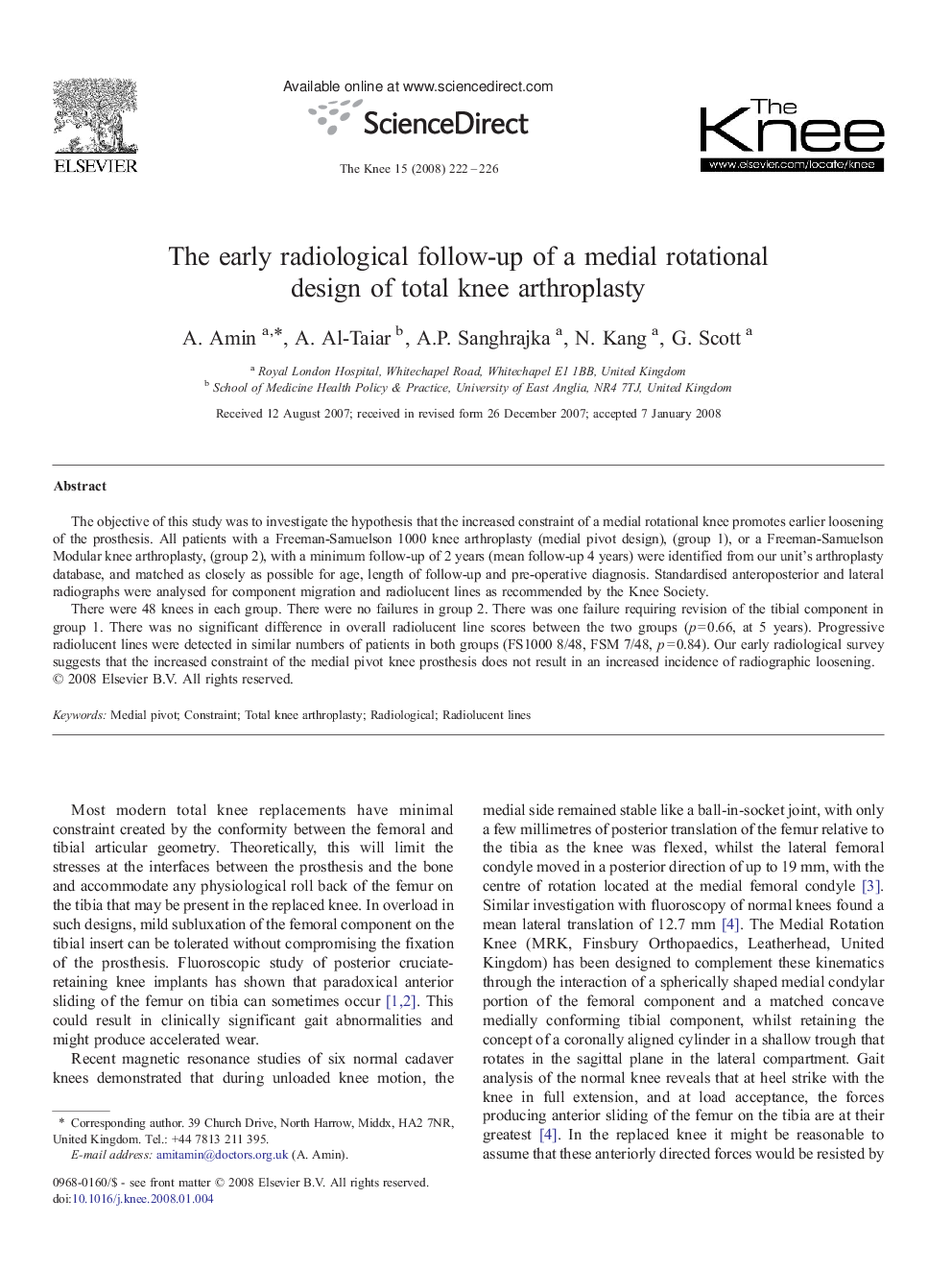| Article ID | Journal | Published Year | Pages | File Type |
|---|---|---|---|---|
| 4078457 | The Knee | 2008 | 5 Pages |
The objective of this study was to investigate the hypothesis that the increased constraint of a medial rotational knee promotes earlier loosening of the prosthesis. All patients with a Freeman-Samuelson 1000 knee arthroplasty (medial pivot design), (group 1), or a Freeman-Samuelson Modular knee arthroplasty, (group 2), with a minimum follow-up of 2 years (mean follow-up 4 years) were identified from our unit's arthroplasty database, and matched as closely as possible for age, length of follow-up and pre-operative diagnosis. Standardised anteroposterior and lateral radiographs were analysed for component migration and radiolucent lines as recommended by the Knee Society.There were 48 knees in each group. There were no failures in group 2. There was one failure requiring revision of the tibial component in group 1. There was no significant difference in overall radiolucent line scores between the two groups (p = 0.66, at 5 years). Progressive radiolucent lines were detected in similar numbers of patients in both groups (FS1000 8/48, FSM 7/48, p = 0.84). Our early radiological survey suggests that the increased constraint of the medial pivot knee prosthesis does not result in an increased incidence of radiographic loosening.
